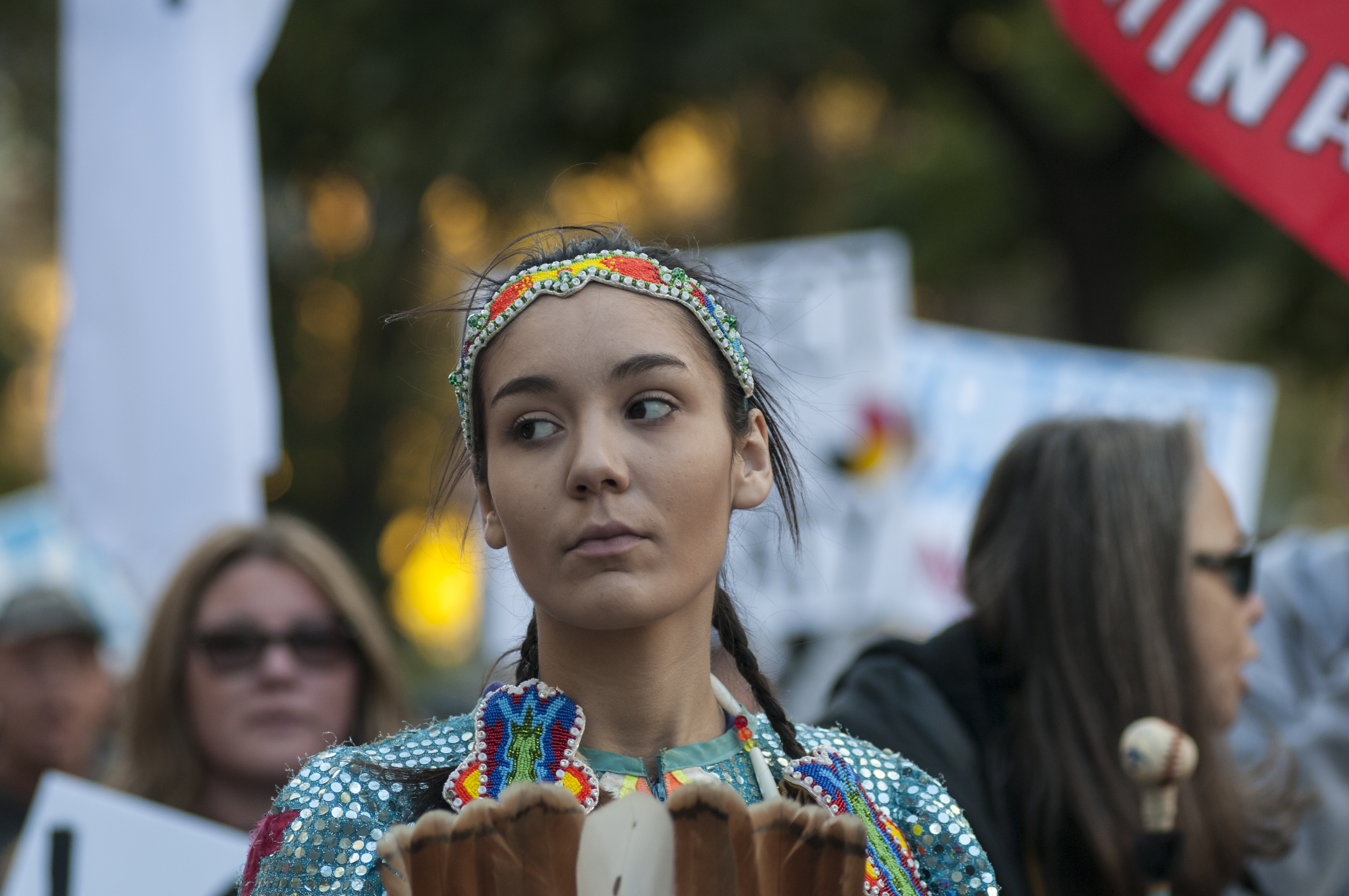Why Marchers Wore Red for Missing and Murdered Indigenous Women at the 2018 Women’s March


[Content warning: This article discusses violence against indigenous women]
The Women’s March has undoubtedly had an enduring, positive effect as a movement, but it’s also visibly, repeatedly struggled to center intersectionality and ensure that all women are represented and advocated for as part of its mission. This year, Native and Indigenous women pushed numerous Marches to focus energy on the epidemic of violence against them in North America.
As a result of this activism, a number of Marches were led by indigenous women this year, and many marchers wore red skirts, dresses, or scarves to draw attention to their struggle. The Red Dress has been used for years in Canada as a symbol of missing and murdered Indigenous women and girls. For many Nations and tribes, the color red is also a sacred one.
As Ruth Hopkins (Cankudutawin-Red Road Woman), a member of the Oceti Sakowin (the Great Sioux Nation of Dakota, Lakota, and Nakota), explains in a piece for Teen Vogue, “There is an epidemic of missing and murdered native women throughout North America … In the United States, native women are murdered at 10 times the national average rate on some reservations, according to a 2008 report submitted to the U.S. Department of Justice. A 2016 National Institute of Justice–funded study revealed that a staggering 84% of native women have experienced violence in their lifetime, and 56% of native women are survivors of sexual violence.”
“But we aren’t just numbers,” she cautions. “Missing and murdered native women have stories and faces, families who miss them desperately, and come from communities who are crying out for justice.”
Hopkins also reminds us that, although Canada has finally launched a National Inquiry into Missing and Murdered Indigenous Women and Girls, the United States has yet to launch a similar initiative. Now, the Canadian inquiry has certainly been plagued with problems, and the government absolutely needs to invest more responsibly and fully in listening to the concerns of First Nations women. But it exists.
In the United States, it can be incredibly difficult for Native and indigenous women to get justice, for a variety of reasons that include jurisdictional loopholes for crimes committed on Native land, the indifference of federal and state prosecutors, and a Native distrust of law enforcement driven by horrifying rates of police violence. I encourage you to read Hopkins’ entire piece to get a full picture.
As part of the movement to draw attention to this crisis, indigenous women led a number of Women’s Marches across the country.
In Seattle, Washington, members of Missing and Murdered Indigenous Women of Seattle led the march, many wearing red skirts and scarves. They chanted “Say her name!” and recited the names of victims as they walked. “Missing and Murdered Indigenous Women, it’s a grassroots movement,” said Roxanne White to the Seattle Times. “We all share the loss of a sister. We all share the tragedies that happen in our communities, and we all share the knowledge that there’s no justice system for us.”
“It’s a day of unity, and it’s a day of us all coming together, but we’re coming together for these families,” White continued. “Their loved one has been taken, murdered by police, through domestic violence. MMIW families are still looking for their niece, they’re still waiting for their mother, their sister to come home.”
Missing and Murdered Indigenous Women are singing at Pike and Broadway at the start of #WomensMarchSeattle https://t.co/uaiJsYQfYU pic.twitter.com/psve9sMrQa
— Bettina Hansen (@bettinahansen) January 20, 2018
The #WomensMarchSeattle is beginning soon. It is being led by the Missing and Murdered Indigenous Women Group.
Follow along with the @seattletimes at: https://t.co/FBJ37wzWx5 pic.twitter.com/9j9YABSSiL
— Michelle Baruchman (@mlbaruchman) January 20, 2018
In Reno, Nevada, Indigenous women also led the march, again to draw attention to the justice system’s indifference to missing and murdered Indigenous women. They opened the march with a ceremonial dance built around healing and feminine energy. “The jingle dress is a ceremonial dance,” said Teresa Melendez, a member of the Pokagon Band of Potawatami, to KUNR. “It comes from the Shawnee people in the Midwest, from where my people come from. And it’s a medicine dance. [The organizers] wanted to start this event with good energy, with prayer, healing and just that feminine energy.”
Moving forward, one of the ways that you can help is by reaching out to your local chapter of Missing and Murdered Indigenous Women, if one exists in your state. You can also call your representatives to ask why Congress has not followed Canada’s example and launched an investigation into the epidemic of murdered and missing Indigenous women in the United States. Let your reps know you’re paying attention, and that you haven’t forgotten these women and girls.
(Image: arindambanerjee / Shutterstock)
Want more stories like this? Become a subscriber and support the site!
—The Mary Sue has a strict comment policy that forbids, but is not limited to, personal insults toward anyone, hate speech, and trolling.—
Have a tip we should know? [email protected]